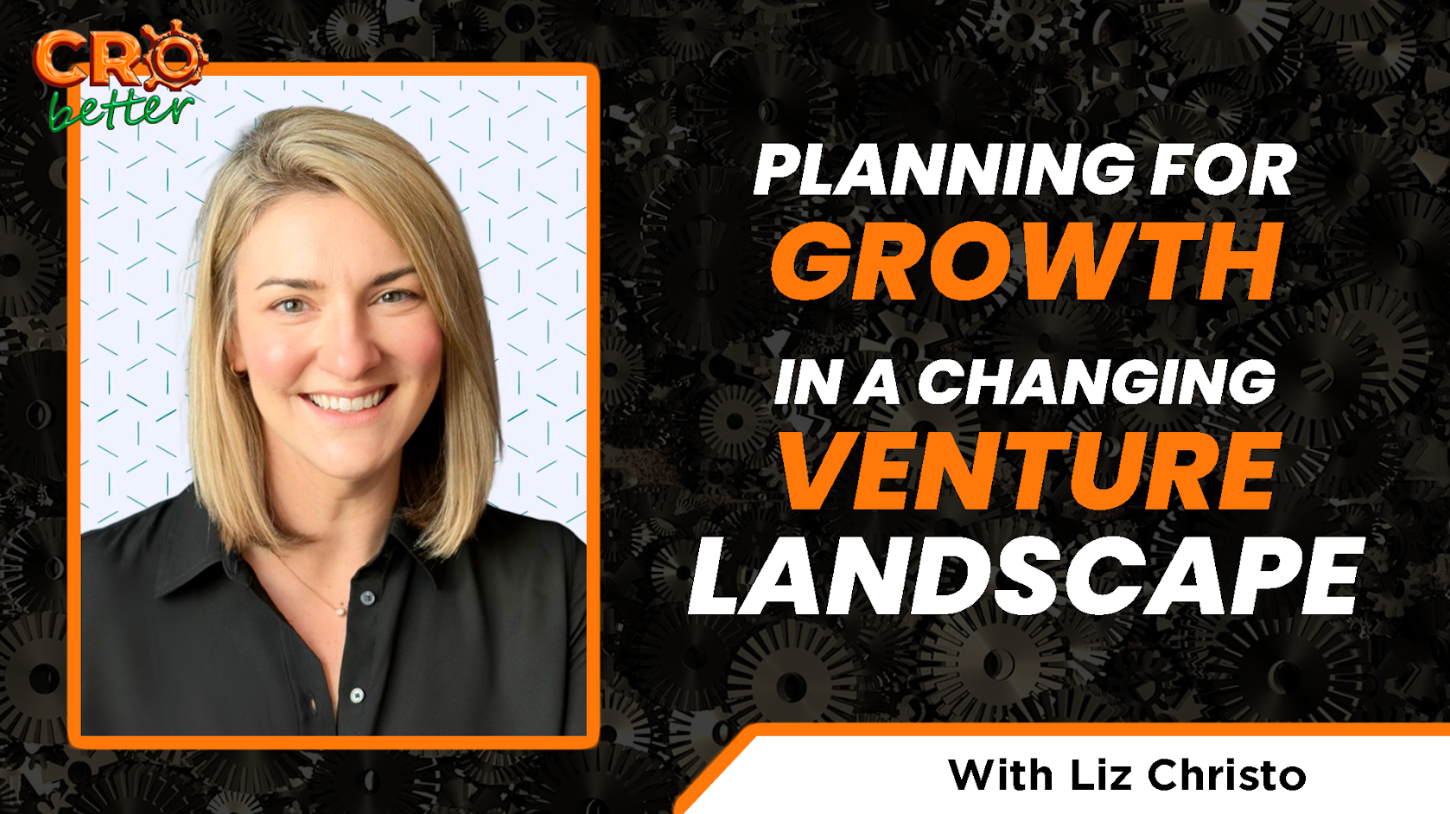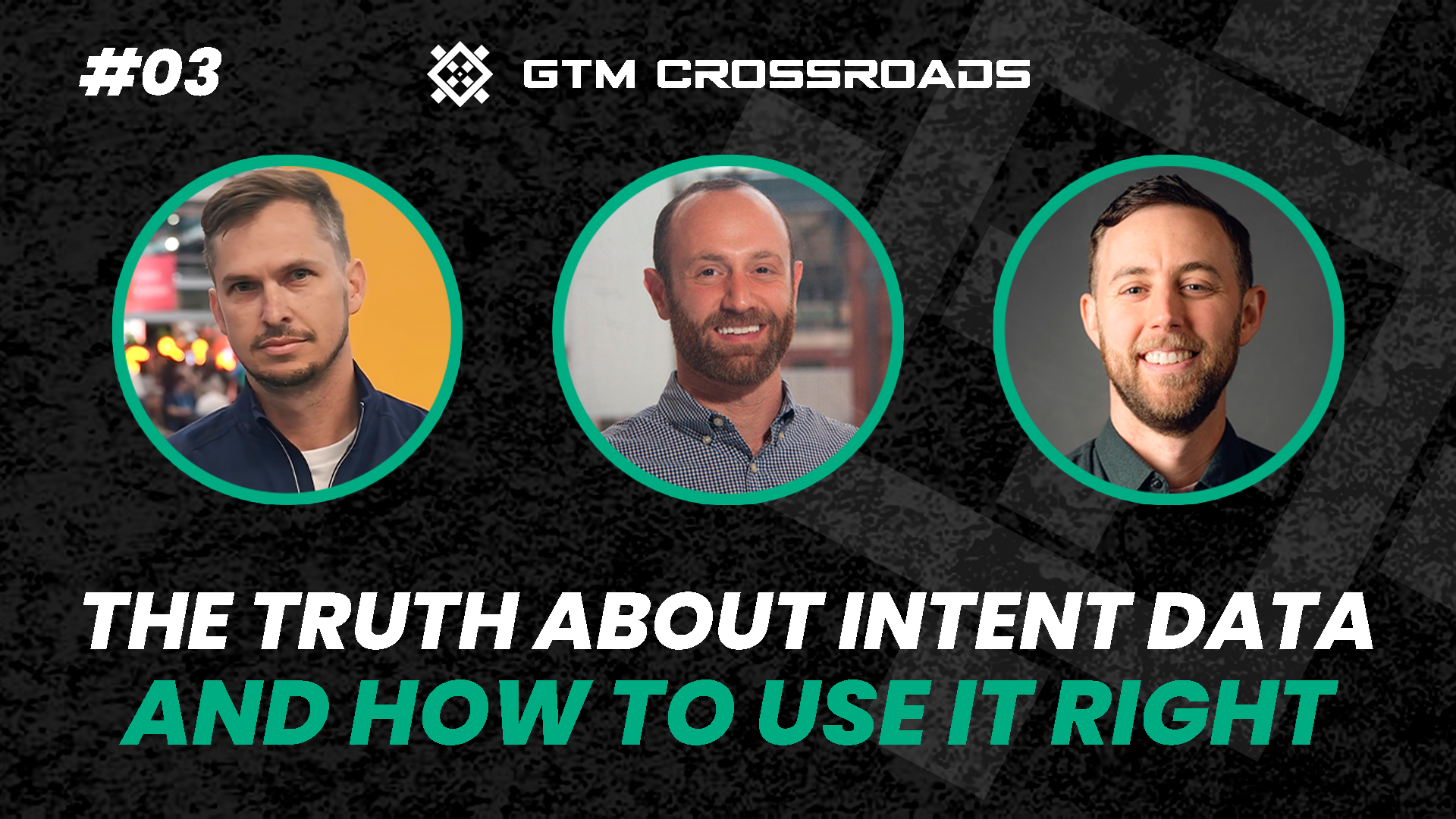Table of Contents
CRO Better Ep #04: Planning for Growth in a Changing Venture Landscape
In the fourth episode of of CRO Better, RevPartners CEO Brendan Tolleson sits down with Liz Christo to discuss the unique approach of Stage 2 Capital in venture capital, focusing on founder support and the challenges of re-accelerating growth in a post-COVID landscape.
They explore the importance of aligning team and investor expectations, the significance of metrics and accountability, and the role of AI in improving operations.
Check it out! 👇
5 Minute Rundown:
Fundraising Expectations Have Skyrocketed
Liz: "Many years ago you might have seen a company with 500K or a million in ARR raising an A round… and that's just not the case today."
Startups today aren’t playing by the same fundraising rules as just a few years ago. Investors now expect significantly more traction before they even consider writing a check. Companies that used to raise an A round at $500K or $1M in ARR now need closer to $1.5M–$2M just to get in the room.
This shift means founders must show early efficiency, clear product usage, and strong momentum right out of the gate, often with a much leaner team.
Growth Whiplash is Real and Exhausting
Liz: "You're kind of sitting there going, 'Alright, we raised this round together'… and now your board is saying, 'Figure out how to make this capital last."
Founders who raised in 2021 are now living in a different reality. They were told to grow fast, then told to cut burn and extend runway, and now… they’re being asked to accelerate again. It’s a psychological yo-yo that leaves CEOs scrambling to figure out how to grow without breaking the bank.
This new era requires rethinking growth strategy, balancing ambition with burn and resetting expectations with your board.
The 3-Track Planning Model: Maintain, Stretch, Upside
Liz: "We try to think of it more as earning the right to grow… and be honest with yourselves in the early days of what are the leading indicators that would make you say you're on track."
Rather than relying on one rigid growth plan, high-performing teams build three: a baseline (Maintain), a realistic improvement (Stretch), and a breakout scenario (Upside). Each plan is tied to leading indicators, like pipeline volume or conversion rates, and teams “earn” their way into higher growth by hitting those early signals.
It’s a smarter, more flexible way to scale without burning cash on unproven bets. This model not only drives accountability but also helps boards and exec teams stay aligned on when and how to unlock spend.
Fewer Metrics. Tighter Focus. Clearer Accountability.
Liz: "If you're tracking 20 things, you're not going to be able to see when something's working or not."
Tracking everything means focusing on nothing. The best teams narrow their dashboards down to 3–5 core metrics, ones that actually drive the business forward. Each metric should have a clear owner and a defined role in weekly reviews.
When everyone knows which lever they’re responsible for and how it ladders up to growth, it eliminates ambiguity, reduces reactivity, and increases team-wide clarity and momentum.
Efficiency First: AI, Headcount, and Smarter Growth
Liz: “What if we didn't hire this person—like how would you hit the goal if we didn't make this hire?”
Growth today doesn’t mean throwing bodies at problems. Instead of defaulting to “let’s hire,” teams are being pushed to ask: What if we didn’t? This mindset forces smarter decisions, sharper priorities, and leaner operations.
Whether it’s using AI to automate tasks or rethinking how existing resources are deployed, efficiency is the unlock, and it often starts with challenging assumptions about what you think you need to grow.





-3.png)
